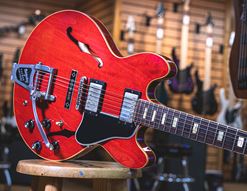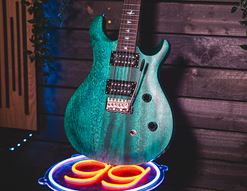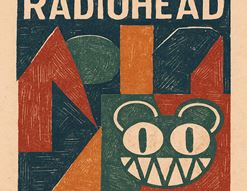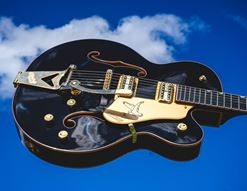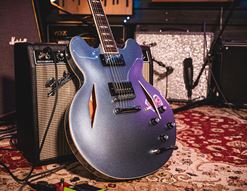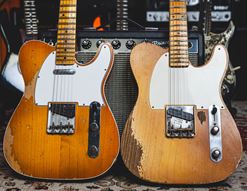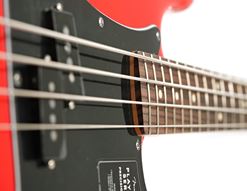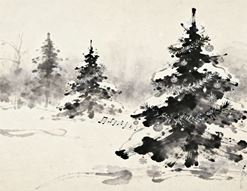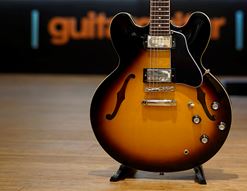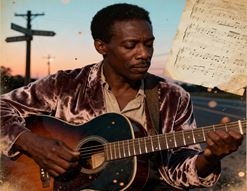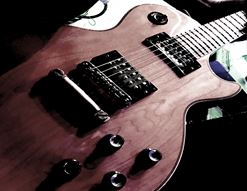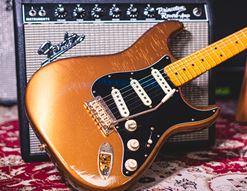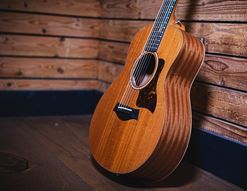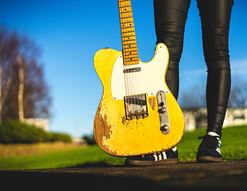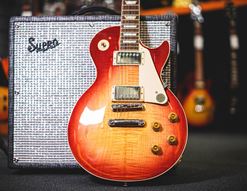Does string gauge matter?
Of course it does! Strings are the main element of your entire instrument. They are what you directly interact with - with both hands - and their feel significantly informs and dictates how you play. Rigidity, malleability, return to pitch, bendability… all of these elements are important, and should be thought about and considered.
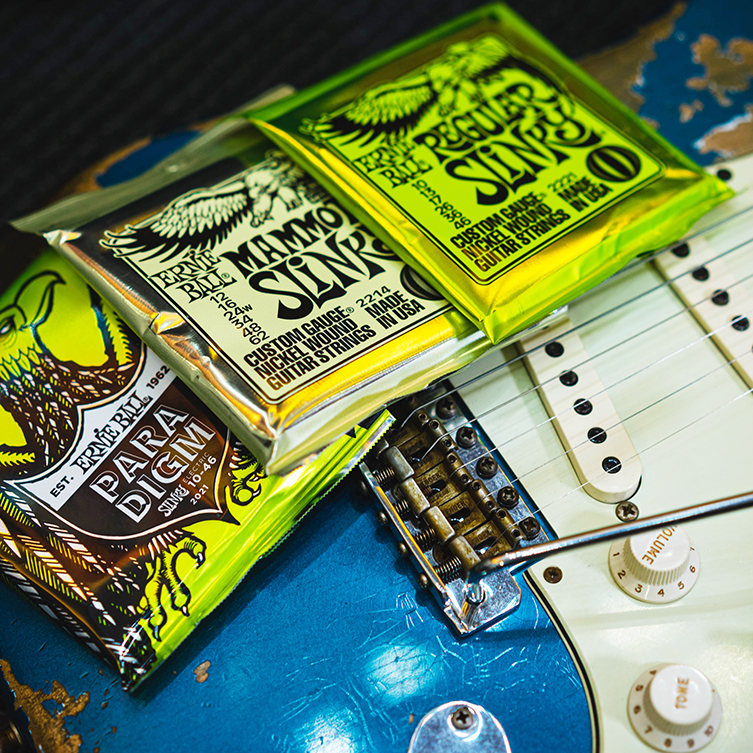
One interesting way to investigate all of this is to check out the string gauges used by some of the guitarists you admire and respect. Whilst artists will change their gear preferences over the years, most tend to be relatively consistent in their string use. Today, I’ve put together a list of famous players alongside the gauges of string they are known to use. Have a look and see if your favourite players are there!
Gauges and Terminology
String gauges are measured in thousandths of an inch. A gauge ten string, then, is ten thousandths of an inch thick, and is correctly written as 0.010”. In order to keep things looking clear and tidy to read, for this blog I’ll simply use numerics, so a gauge ten string will simply be 10. A set of gauge ten to forty six strings (regular ten gauge strings, in other words) will be written as 10-46. Nice and simple. All good?
On top of that, I’ll organise the list by rough string gauge. 9s will be with 9s, and 10s with 10s, regardless of the subsequent heaviness of the bottom strings. Hopefully this will make the whole enterprise a more sensible one to refer to.
Okay, here we go!
Go Straight to a String Gauge
Gauge 7
Billy Gibbons: 7-36
Gauge 8
Jimmy Page: 8-38
Tony Iommi: 8-33 (when in D# tuning)
Chuck Berry: 8-38
Yngwie Malmsteen: 8-48
Steve Hackett: 8-38
Frank Zappa: 8-46
Gauge 9
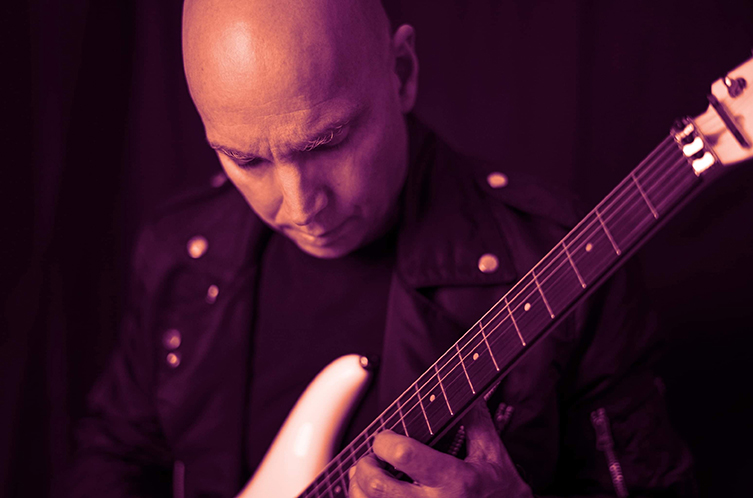
Joe Satriani: 9-42
Brian May: 9-42 (gold-covered, no less!)
Dimebag Darrell: 9-46 (when in standard tuning)
Steve Vai: 9-42
Eddie Van Halen: 9-40 (9-42 in latter days)
Billy Corgan: 9-46
Scott Ian: 9-42 (previously 11-56)
Gary Moore 9-48 (10-52 in earlier times)
Dave Navarro: 9-42 (also 10-46)
Jennifer Batten: 9-48
Mark Knopfler: 9-42
Randy Rhoads: 9-42
Reeves Gabrels: 9-46
Tony Iommi: 9-42 (C# tuning)
John Petrucci: 9-46
Tom Morello: 9-46 (10-46 on Drop D guitars)
Adrian Smith: 9-40
Dave Murray: 9-40
Angus Young: 9-42
Steve Rothery: 9-42
Gauge 10
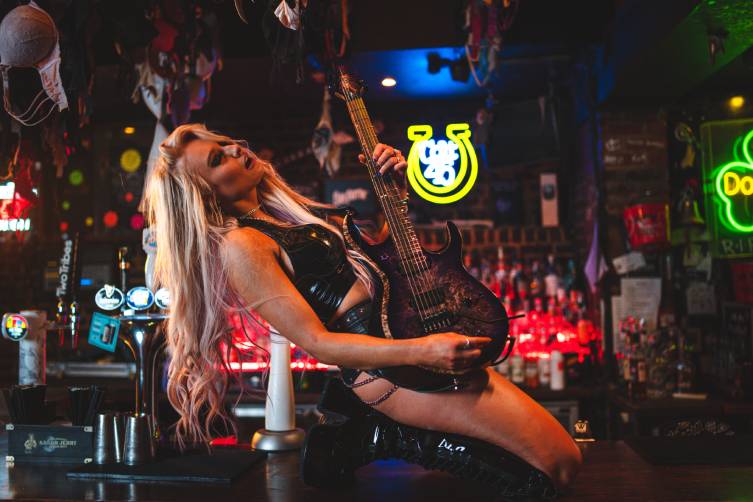
Sophie Lloyd: 10-48
Kirk Hammett: 10-48 (sometimes 11-48)
Eric Clapton: 10-46
Kerry King: 10-46 (10-52 for drop tunings)
Jeff Beck: 10-46 (also 11-50)
Eric Johnson: 10-46
David Gilmour: 10-48
Jimi Hendrix: 10-38
Jerry Cantrell: 10-46
Nancy Wilson: 10-46
Devin Townsend: 10-52
Nuno Bettenbourt: 10-52
BB King: 10-46
John Frusciante: 10-46
Rob Flynn: 10-58
Bill Kelliher: 10-52 (also a .060 on the bottom for drop B tunings)
Matt Bellamy: 10-52 (also known for having a .060 for his lowest string!)
Gauge 11
Yvette Young: 11-48
Daniel Davies: 11-50
Joe Bonamassa: 11-52
Keith Richards: 11-42
James Hetfield: 11-50
Robin Finck: 11-48
Duane Denison: 11-48 (10-44 on 24.75” scale)
Mick Mars: 11-48
Gauge 12
Malcolm Young: 12-56
Thurston Moore (varies widely depending on song, but often 12-54)
Gauge 13
Stevie Ray Vaughan: 13-58 (with many variations including 13-52 and 12-62, depending on sources)
But What Does it All Mean?
So, there’s a fairly long list of major players, and the string gauges they prefer to use. These are all 6-string choices, of course: a few of these artists also use extended range guitars but I’ve left them off the list for the sake of comparison.
So what is there to learn? Most players use either gauge 9 or 10 strings. That is not a surprise at all, and backs up the fact that these are our best-selling gauges.
Some players might use heavier strings but tune down to Eb or D. That would account for certain heavier gauges, but it’s not a hard and fast rule.
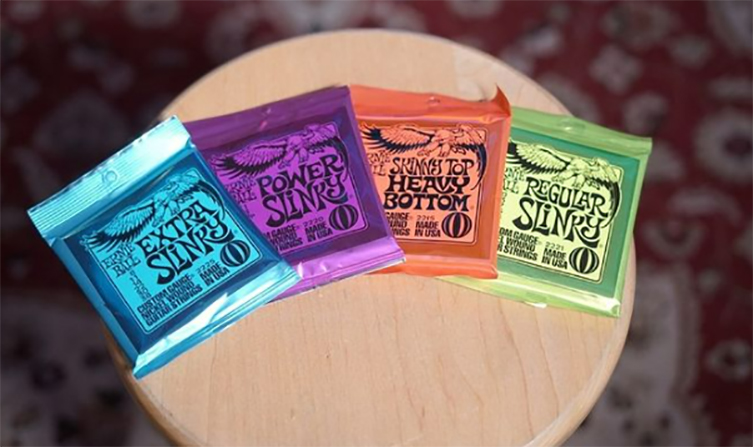
Why do some players use heavier strings? Many cite tone reasons, though that is a highly subjective point of view: many of the world’s most celebrated guitarists use extremely light strings, after all! Mark Knopler uses 9s and Billy Gibbons uses gauge SEVEN for heaven’s sake! Both of these musicians have world-class tone, so it’s certainly possible with lighter strings.
Some players use heavier strings for stability. When either tuning lower than standard, or if they often use guitars with shorter scale lengths (Jaguars, Les Pauls etc), then a slightly heavier set of strings can help to balance things out.
Do keep in mind that this is a physical thing. For example, James Hetfield is a pretty big guy and he hardly ever plays solos, so 11-50 makes a ton of sense to him. Eddie Van Halen was only about 5ft 8” tall and threw out lightning fast solos, so Hetfield’s string choice would be entirely inappropriate for Eddie’s playing: lighter strings would be far easier for him. And so on and so forth.
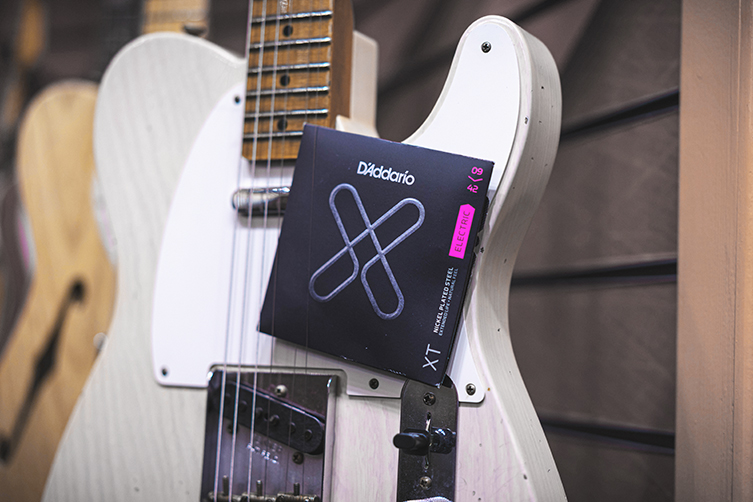
Remember This
What I’d take the time to double down on, though, is that you really need to go with what feels right to you. Not anybody else. If you play with thirteens because SRV did, and you get tendonitis every time you look at a guitar, then I’m here to tell you to stop it! It’s not for you and you are hurting yourself for no reason. Heavy strings worked for Stevie, but almost nobody else. And remember: your audience neither knows nor cares what gauge your strings are: they care if you sound good and can play well. Pick the strings that support those elements, and you’ll never go wrong.
Click to View all of our Electric Guitar String Sets

